Video by Tim Dodd, Web-version by Alex Crouch
Introduction
Perseverance is the successor to NASA’s Curiosity Rover, which has been a home run flagship mission for the agency. The roaming laboratory has produced an incredible amount of data since it landed on Mars back on August 6th, 2012.
In its eight years of science on the Martian surface, the rover has found evidence of previous liquid water, uncovered ancient organic material and found that the planet once had a thicker atmosphere and surface water.
It’s also discovered that Mars once had the right chemistry to support microbial life; Having observed the six key ingredients for life: carbon, hydrogen, nitrogen, oxygen, phosphorous and sulphur.
Moreover, the rover also helped lay the foundation for future crewed missions by precisely measuring the radiation exposure, finding the dosage to be too high for human presence without shielding.
For a full rundown on the Mars 2020 mission, from liftoff to landing of Perseverance, visit our Post Landing Review.
Mission Timeline
Perseverance is scheduled to lift off during the 2020 launch window, which extends from the middle of July to mid-August. That means if you’re reading this after August 15th and it hasn’t taken off, the next opportunity isn’t until August 2022.
Although as of the writing of this article, NASA is looking into the possibility of launching after August 15th as a contingency.
Regardless of when it ends up flying, the rover will land on Mars at the exact same time and date: February 18th, 2021, at 3:30 p.m. Eastern – thanks to orbital mechanics.
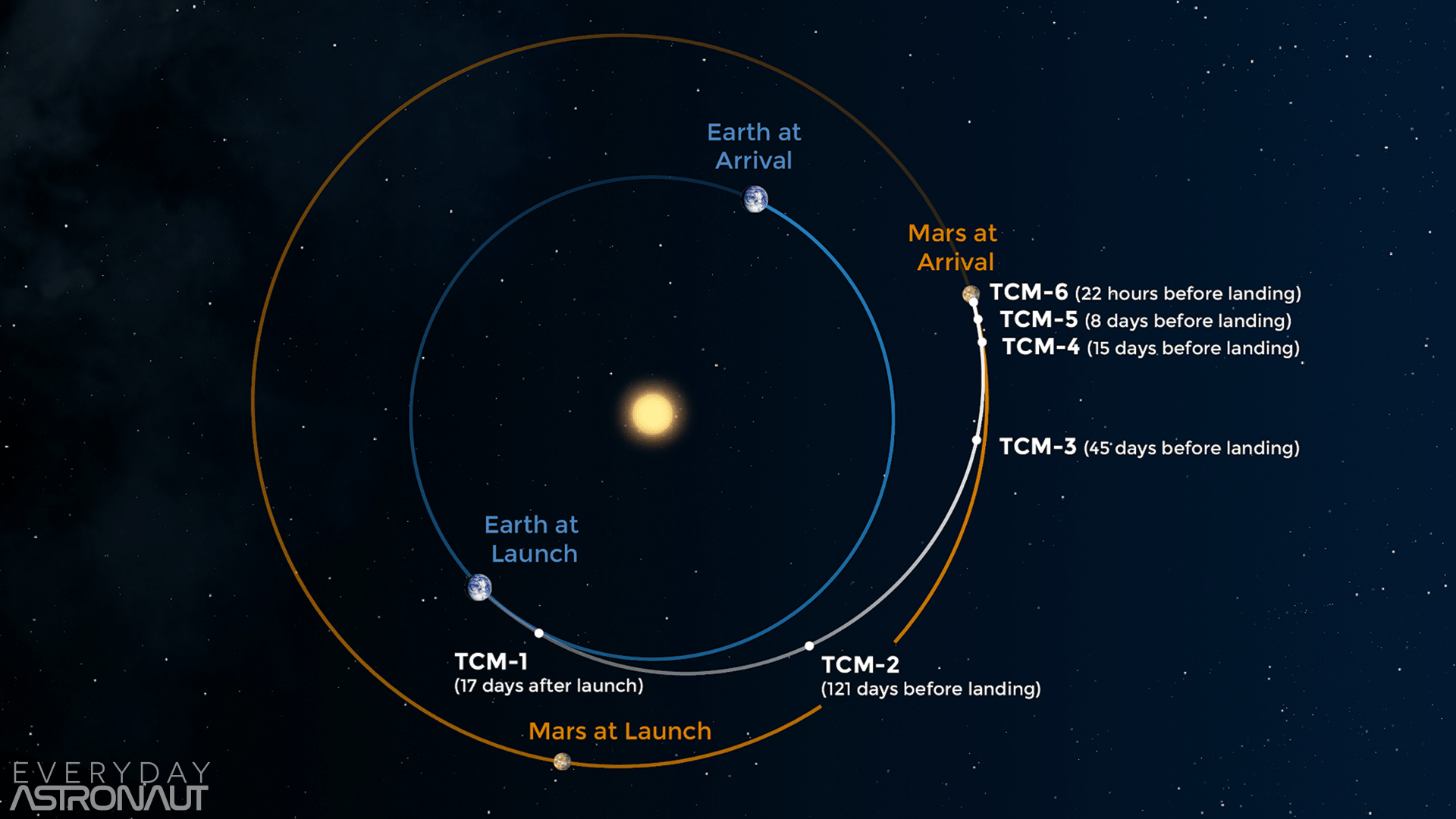
As those of you who have played Kerbal Space Program might know, to get to Mars you don’t travel in a straight line. Instead, you raise your orbit around the sun such that it intersects Mars’ orbit. Resulting in a trajectory that intercepts Mars at the exact point and time that it’s closest.
Launch
Just like the Curiosity before it, Perseverance will head to Mars riding atop an Atlas V rocket, in almost its most powerful 541 configuration. The first digit of which indicates the larger 5-meter fairing. The second denotes the four solid rocket boosters, and the final determines the number of RL-10 engines on the Centaur upper stage.

Where will Perseverance land?
After a 7-month long journey spanning 497 million km, Perseverance will land at Jezero Crater, in February 2021.
Jezero, meaning lake in Balkan languages, was chosen for its possibility of once harbouring life. As the name suggests, It’s believed that the crater was once flooded with water, which could have allowed for life in ancient times.
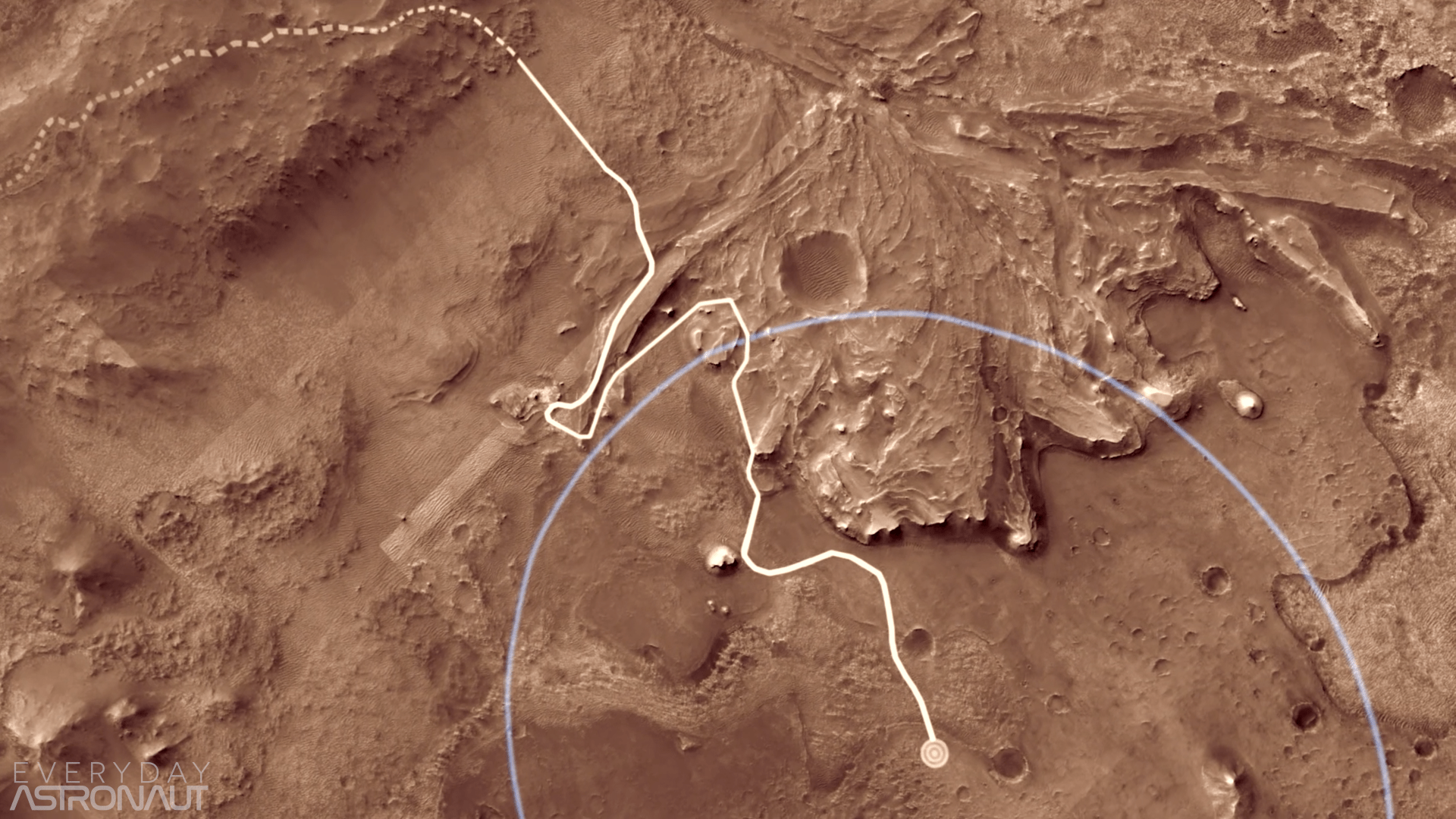
Entry Descent and Landing Sequence
Min/Sec |
Event |
|---|---|
– 10:00 |
The cruise stage separates and burns up in the Martian atmosphere. |
+ 00:00 |
The craft begins entering the martian atmosphere. |
+ 01:20 |
The heat shield undergoes maximum heating, roughly 2,100 degrees Celsius. |
+ 01:30 |
The craft experiences maximum deceleration. Slowing down from 21,200km/h (13200mph) to just 1600km/h (1000mph) in only 2.5 minutes. |
+ 04:00 |
At an altitude of 9 to 13 km (6-8 miles), the parachute deploys. |
+ 04:20 |
The heat shield separates and falls towards the martian surface. The radar ground systems then activate and begin scanning the Martian surface for a suitable touchdown zone. |
+ 05:30 |
The back shell separates, and the rover begins a brief free-fall before the landing motors ignite – this is definitely the maximum pucker moment. |
+ 05:XX |
At an altitude of 21 meters (70ft), the rover separates from the landing stage and is gently lowered to the ground on 3 nylon ropes. At this point, the craft has slowed to just 2.7km/h (1.7mph). |
+ 05:XX |
The rover touches down on the Martian surface. The landing stage and sky crane then fly away before crashing at a safe distance. This will officially begin Perseverance’s mission on the surface of Mars. |
Differences on descent
The above might sound slightly déjà vu to those of you familiar with the rovers predecessor, but the mission makes use of a few new technologies. Most notably:
The EDLS, or Entry Descent and Landing System, contains an innovative terrain-relative navigation system. The technology allows a computer to scan the terrain during descent and compare it to an orbital map, diverting to a safer landing zone if necessary.
The above system also features a range trigger, which will determine when the parachute should open. This will allow the rover to land closer to points of scientific interest, saving valuable time that would otherwise be spent roaming the red planet’s surface.
Why use a sky crane?
You’ve probably wondered ‘How can that sky crane make any sense?’ With the extra parts and complexity, It seems like a lot more trouble than its worth. Why don’t they just land it like normal and drive the rover off the top? – wouldn’t that be a lot easier and lighter?

Firstly, this is done to avoid disrupting the surface too much. Having rockets firing close to the ground can interfere with the rover, making for big treacherous grooves in the ground.
The use of a sky crane not only prevents this by keeping the rockets far away from the ground but allows for a greater margin of error. Through the use of tethers, the sky crane can roughly hover whilst gently lowering the rover until it touches the ground – removing the need for a precise landing.
Secondly, although it might sound counter-intuitive, the system saves weight. A lander would require landing legs, a means to keep the rockets off the ground and a ramp for the rover to drive down – adding more weight and complexity.
Why Perseverance?
Perseverance was named by Alex Mather, who won a K-12 public naming contest with 28,000 entries. Named after the human characteristic, the mission follows the name-scheme of its predecessors: Curiosity, along with Spirit and Opportunity.
The rover will not roam the barren planet alone; it will carry the names of 10.9 million people aboard three thumbnail-sized silicon chips. The rover also features a tribute plate to the medical community for their tireless work during the pandemic, alongside an insignia of Earth, Mars and the Sun.
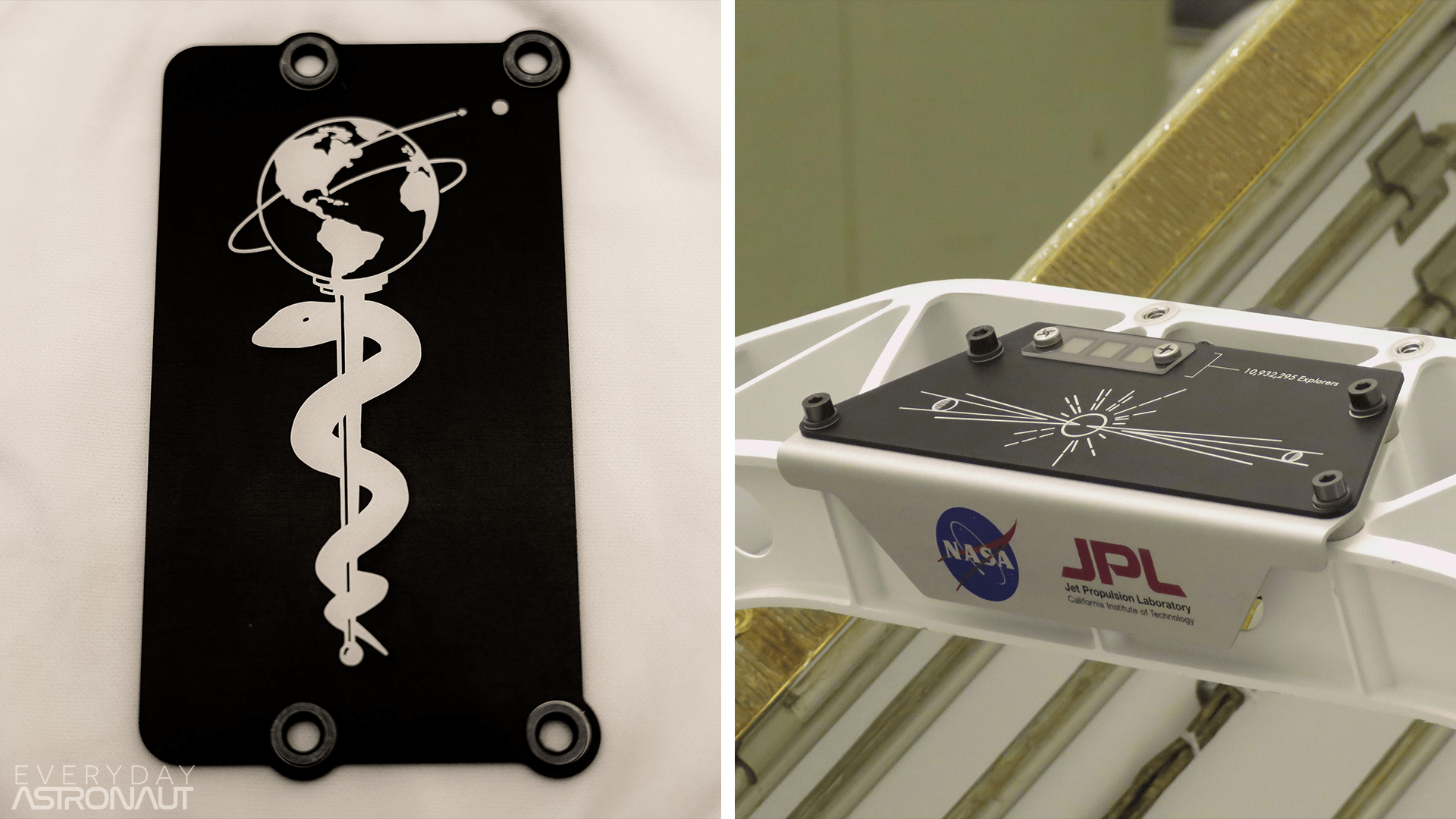
Curiosity vs Perseverance
First of all, the rovers are almost identical in design, with Perseverance using some of Curiosity’s back up parts. Both rovers measure roughly 2.9m wide, 2.7m long and 2.2m tall, or about the size of a small SUV – It’s easy to forget how big these rovers are.
Both rovers utilize the same body known as the “WEB” or Warm Electronics Box. The shell acts as a strong outer layer, protecting all the electronics whilst keeping them temperature controlled.
The area on top of WEB, known as the deck, is home to a large mast that houses the main cameras (SuperCam and MastCam-Z), along with the Mars Environmental Dynamics Analyzer, or MEDA. The latter is basically a weather station.

Despite their similar size, Perseverance will be heavier: weighing 1050 kg in comparison to Curiosity’s 899 kg. So let’s look at the changes that make Perseverance heavier.
Rock core sampling
Perhaps one of the biggest upgrades to the rover is its ability to collect samples. Perseverance’s belly is home to a sample collecting system, which will allow it to collect rock cores for future study. However, somewhat confusingly, there are no plans to return them to Earth. Instead, the samples will be stored, ready for someone – or something – to pick them up at a later date.
This raises a string of confusing questions, for instance: “If something else comes along to grab these samples, why can’t that thing just drill its own core samples? Isn’t that kind of trivial? Isn’t it pretty hard to have another rover retrace Perseverance’s steps and get its cores rather than just do it itself?”
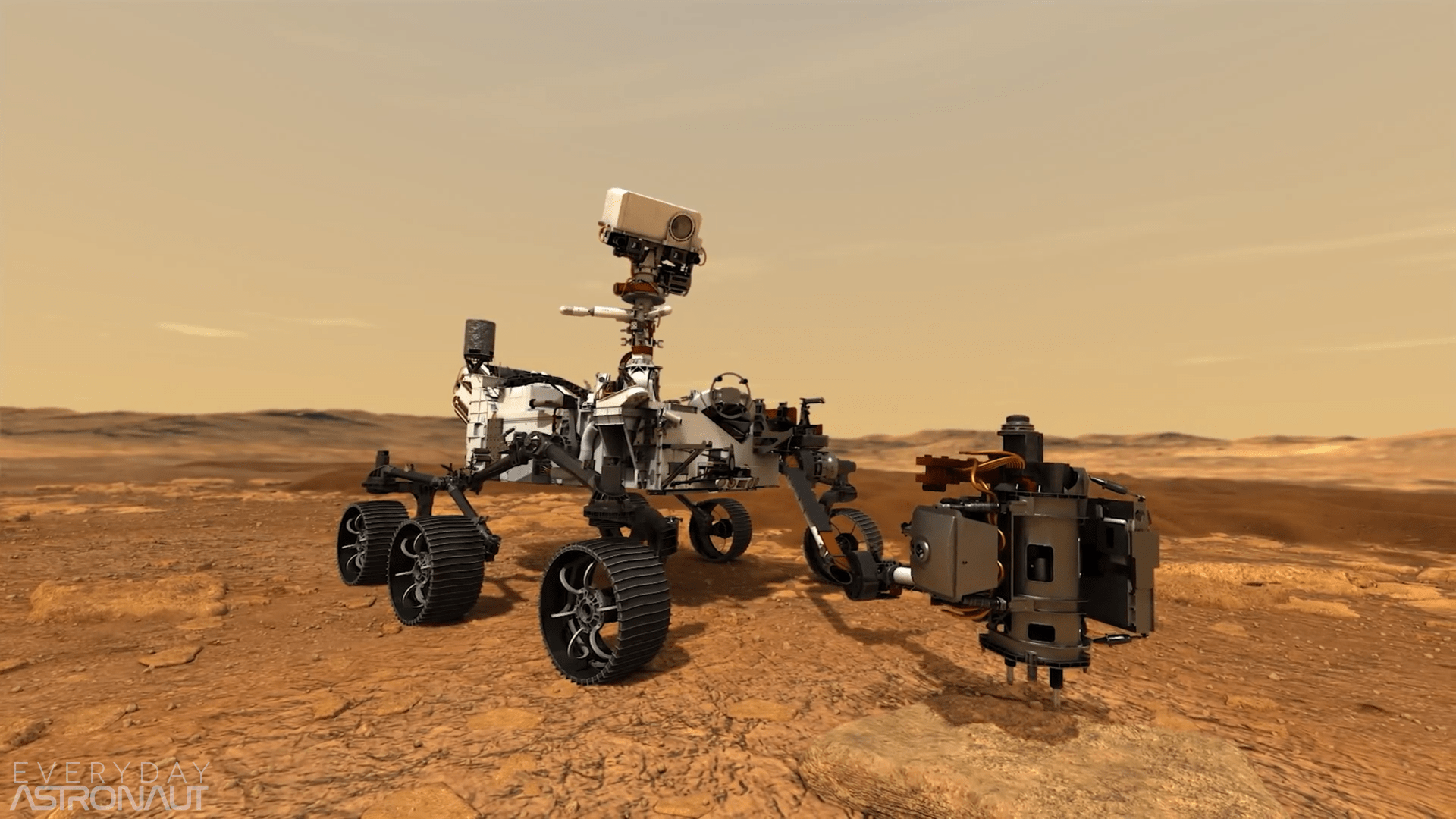
Why will the samples be stored?
Firstly, storing samples before any more human activity – be it from future crewed missions or rovers – is a wise idea. It ensures clean samples free from any potential contamination of the Martian environment. Therefore making sure we don’t obscure any potentially valuable data.
Secondly, it saves the weight of a heavy drill and containment system from being required on a future rover.
Witness Tubes
Perseverance is equipped with 43 sample collecting containers, of which at least 20 will be used. The craft also has five ‘witness tubes‘, which will be used to catch molecular and particular contaminants during drilling sessions.
In other words, they will capture gases that may be released or outgassed from the rover, chemical remnants from the landing system, or any other Earthly material that may have somehow made it to Mars.
Opening the tubes in drilling sessions ensures there’s a control to observe later on. Meaning when they’re looking at samples, they’ll be able to cross-reference the witness tubes to see if all of the materials within came from Mars.

What will they do with the samples?
Depending on what NASA ends up wanting to do, the samples will either be deposited all at once or in a few strategic places for future collection and return.
There are even plans in the works between ESA and NASA to send another rover down. The concept, armed with a mini rocket, will collect samples and launch them into Mars orbit. From which, they will likely be snatched up by another probe and returned to Earth.
This is possible because Mars has a lower gravity and a thinner atmosphere than Earth. Meaning it takes a much smaller rocket to get something from Mars back to Earth than it does in the opposite direction.

These plans will likely change, but won’t come to fruition until at least 2028. So we won’t be getting any sample returns until the 2030s at best – and this feels like a Hail Mary stretch of events to work perfectly.
I almost wonder if humans will end up collecting samples with their own drills and observing them on a Martian base or spacecraft before these samples make it back to Earth. But regardless, it’s a cool way to preserve samples before human presence.
Lessons learned from Curiosity.
Learning from issues with Curiosity, the teams at NASA have made some significant design changes that should extend the rover’s lifespan. These should allow it to conduct even more science.
Wheels
Functionally, the most significant change made has been to the wheels; which have been redesigned with a larger diameter and a smaller tread width. The iteration should prevent the rover from getting stuck in the fine martian sand, as Curiosity did in 2014.
While on its way to study the base of Mount Sharp – the mission’s ultimate science destination – Perseverance’s predecessor found itself stuck in a football-field-sized sand trap. To avoid getting permanently stuck, the rover was forced to reroute around Hidden Valley – taking away valuable time from the mission.

Instrument Suite
Perseverance features a new cutting-edge instrument suite. Using its X-Ray spectrometer and UV laser, it will scan the Martian surface at a finer scale than ever before – searching for evidence of ancient life.
Robotic Arm
The rover’s arm has seen numerous upgrades in comparison to Curiosity. It features a new hand, or turret, full of new science tools.
The upgrades include an updated coring drill, two science instruments, and a colour camera for close up surface inspections—the latter doubles up as an excellent selfie cam, which will no doubt be used for Curiosity-style selfies.
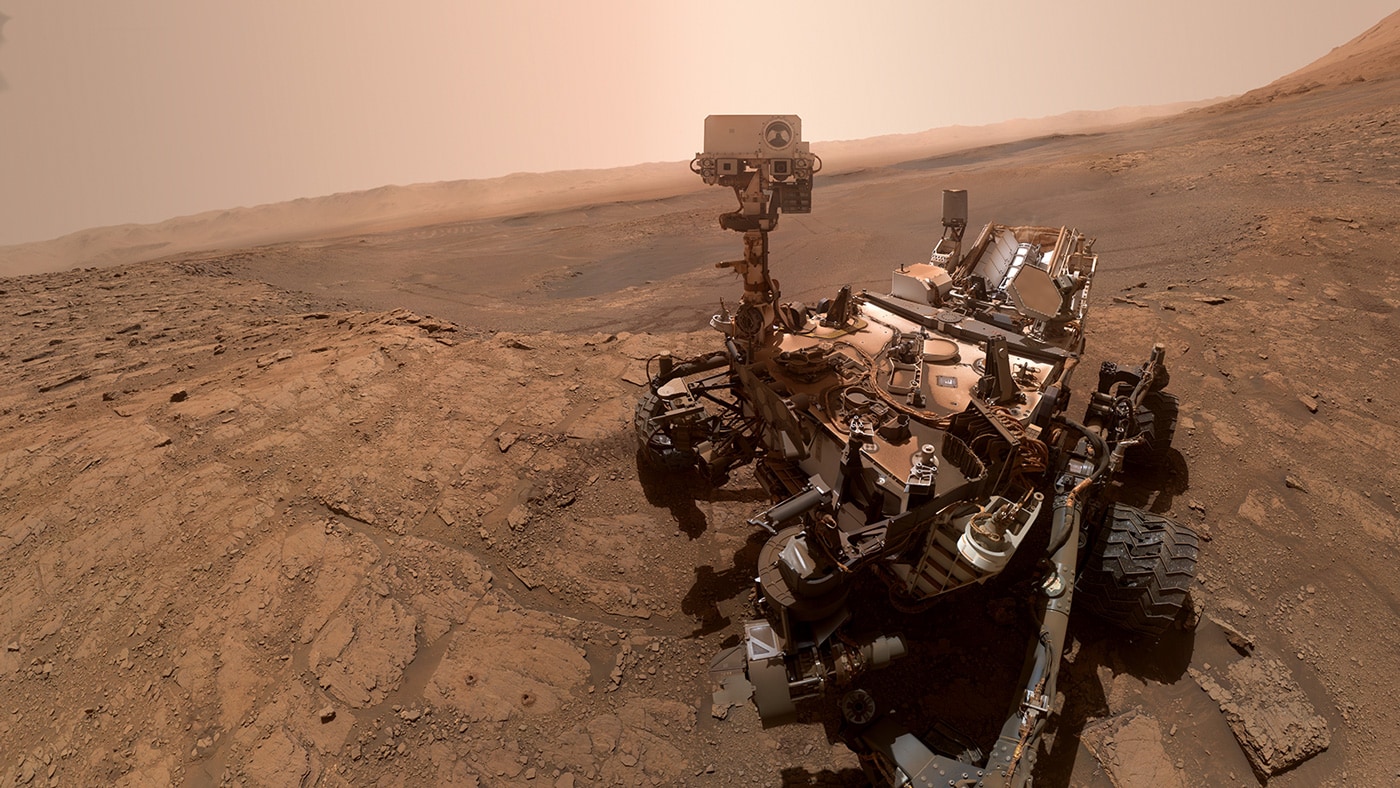
Cameras
Perhaps one of the things I’m most excited for is the huge upgrade in cameras. Perseverance will carry a remarkable 23 cameras to the surface. Of which, some will film the rover’s descent into the Martian atmosphere, capturing awe-inspiring footage as the craft drifts down to the Martian surface.
The new cameras, with their higher resolution, will offer much better picture quality. While Curiosity took 2-megapixel black and white photos, the cameras aboard Perseverance will capture 20-megapixel, full-colour images.

Although pictures might not seem like the most scientifically valuable thing, I think they’re one of the most important aspects of this mission. They’ll help raise public interest, creating a sense of what it’s like to be on the barren surface. Being taxpayer-funded, public interest plays a big part in flagship NASA missions.
To expand on that, Perseverance will also carry two microphones, which will capture the sounds of mars during landing as well as from the surface. With beautiful descent footage, real audio and awesome hi-rez imagery, this mission will bring Mars to us better than ever before!
Communications
Much like Curiosity, Perseverance utilises three forms of communication:
An Ultra-High Frequency Antenna with transmission speeds of 2 megabits per second to the relay link.
Alternately, an X-Band high-gain antenna with a steerable beam will be used to transmit data directly to Earth at 160-500 bits per second.
Lastly, the rover features an X-Band low-gain antenna – which will be primarily used for receiving signals. As it can only transfer 10 bits per second, it won’t be used for transmitting images or anything sizeable.
How is the rover powered?
Perseverance makes use of the same power source as Curiosity, which has proven to be incredibly reliable. The 45 kg radioisotope thermoelectric generator, or RTG, converts the heat of the radioactive decay of plutonium into electricity.
A pair of lithium-ion batteries will work in tandem with the RTG to help handle peak demand. The batteries will be charged when excess electricity is produced, kicking in at times when the rover is using more energy than the RTG generates.
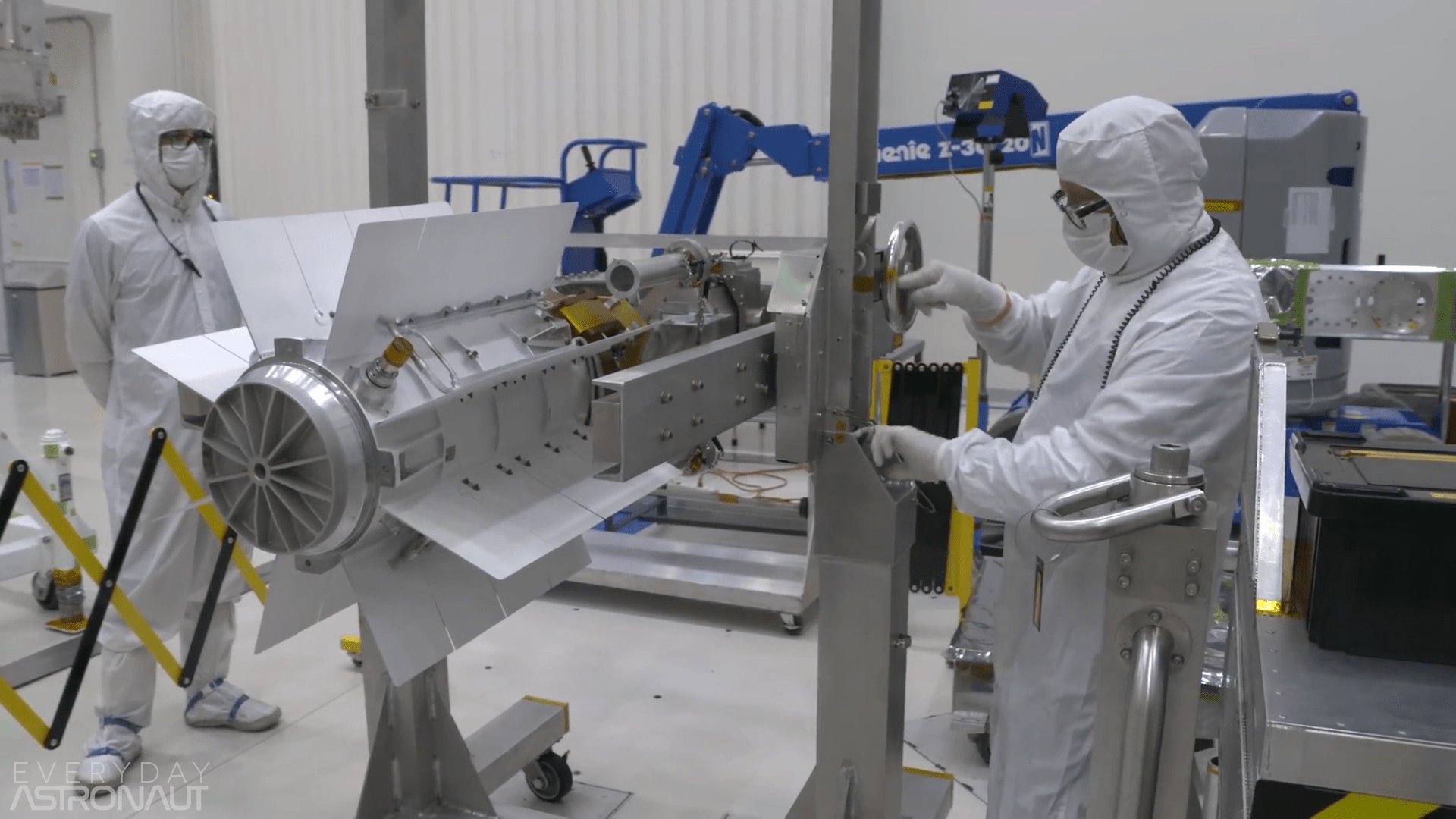
In a feat of JPL over-engineering, the generator is designed to last 14 years – which is far beyond the planned mission duration of 3 Earth years (1.5 Martian years). This is typical of the laboratory, and we’re thankful for it when it comes to missions like this. For instance, Curiosity and Opportunity exceeded all life duration expectations, allowing them to conduct far more science than expected.
Fun side note: This will be the first mission to launch from the U.S. with an RTG that won’t require direct presidential approval. Following a recent change in permissions, NASA administrators now have the authority to approve a launch with the sensitive technology. Meaning our good friend Jim Bridenstine will give his thumbs-up, and it’ll be launch time!
Experiments onboard
MOXIE
MOXIE (Mars Oxygen in-situ resource utilisation) will be the first attempt at producing oxygen on the surface of Mars using in-situ resource utilisation, a crucial first step for crewed missions.
Although Mars has an atmosphere, it’s very thin – only about 1% as dense as Earth’s. And of that 1% density, carbon dioxide accounts for ~96% of the gas in Mars’ atmosphere. Oxygen is only 0.174%, compared to 21% in Earth’s atmosphere.
If you factor the partial pressures of Earth and Mars, take the average temperature into consideration and convert to moles; taking a breath on Mars, you’d only inhale about 0.0071% as much oxygen as you would at sea level on Earth. Or in other words, there’s 14000x more oxygen per litre on Earth than on the surface of Mars.
When asked what he was most excited for, Bobak Ferdowsi – a JPL engineer who worked on Curiosity – made the case for MOXIE best: “As someone who hopes to visit their baby on Mars, I’d love to have plenty of Oxygen when I get there.”
If humans are destined to live on Mars, figuring out how to produce oxygen from carbon dioxide is vital for survival. Equally, if they’re to return home, they’ll need oxidiser for their rocket.
MOXIE, although only producing 10 grams of oxygen per hour, is an important first attempt at converting CO2 into oxygen on another world, demonstrating the integral process before humans step foot on the red planet.
Ingenuity
Perseverance has one more trick up its sleeve – or rather, under its belly. The rover will not be flying alone, and will instead be accompanied by a small helicopter drone named Ingenuity.
The drone will demonstrate the possibility of flight on Mars, whilst providing engineers on earth with aerial images. Which, because of their proximity to the surface, will have approximately ten times the resolution of orbital images – allowing them to better plan routes for the rover.
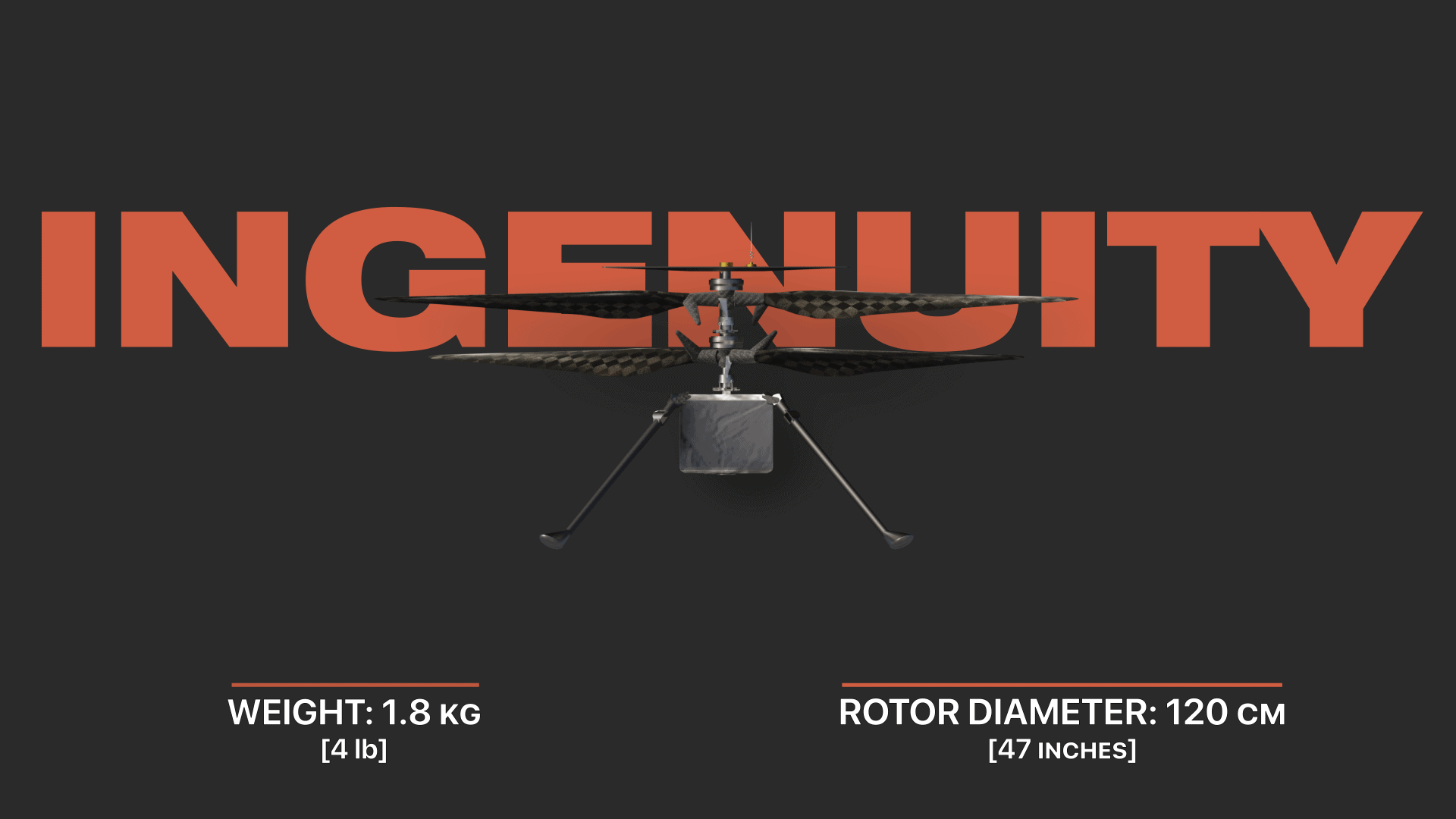
Ingenuity is expected to fly at least five times during its 30-day test campaign, with each flight lasting no more than 3 minutes. While not that long of a flight time, the idea of there being a drone flying around on another planet millions of kilometres away is incredible! Although, I might be biased – having seen it with my own eyes while it was going through its final testing at JPL!
Perseverance’s companion will hopefully be the first of many drones to fly around on other worlds. We can look forward to missions such as Dragonfly, a quadcopter that will fly around on Saturn’s largest moon, Titan. But that won’t happen until the mid-2030s.
Conclusion
All in all, NASA’s next mission has a lot to look forward to. With its incredible suite of cameras, its own drone to fly around, and its ability to preserve Martian samples for an eventual return mission – it’s hard to pick a favourite.
Personally, I’m between Ingenuity the drone, and just seeing better imagery in general. But I also think doing in-situ resource utilization and actually making oxygen is amazing too. This mission is going to be incredible.
What do you think?
How about you, what are you most looking forward to? What other questions do you have about this mission? Maybe you’re one of the people who have their name on Perseverance? Let me know your thoughts and questions in the comments below.
If you have any more questions, join me live for the launch – whenever it happens – and landing. Both of which I will be streaming; helping point out all the interesting intricacies and answering your questions live!




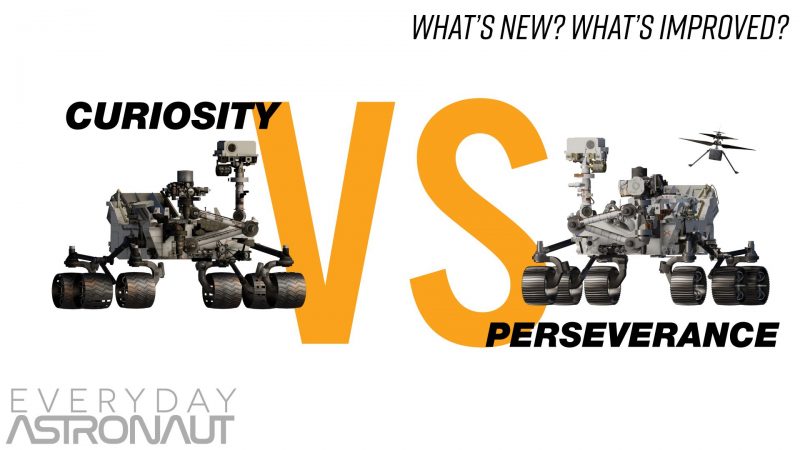

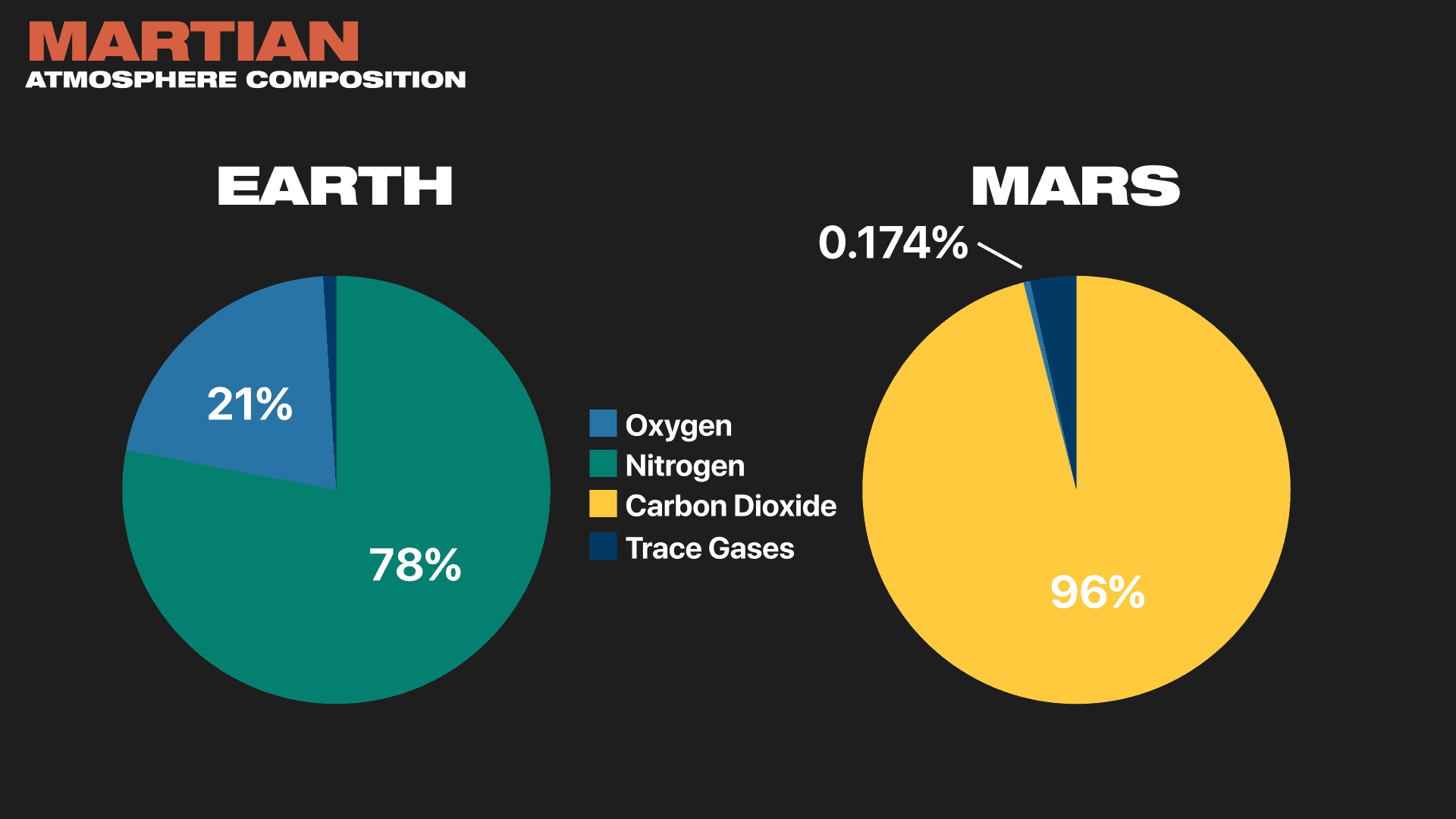
Amazing article! The best I’ve found on this topic so far.
Thank you for explaining this mission so clearly, I can’t wait for the video of the descent! I hope they will be able to send it back to Earth quickly for us to view and not wait a few years 🙂 Is Curiosity in a completely different area from Perseverance? No chance of doing the first ever extraterrestrial robot meetup?
Tim, lots of great stuff here. One question-do you have an idea why they stuck (no pun intended!) with wheels instead of using tracks? Seems tracks like a tank or bulldozer would be less likely to bog down in the Martian outback.
Keep up the good work!
Tim,
Why don’t Mars probes use a gravity assist trajectory from Venus? Supposed to be quicker, and provide more launch opportunities.
Hi Tim,
Fascinating stuff as always! Ingenuity got me thinking (pun intended) – how does it compensate for the very thin Martian atmosphere (not letting Andy Weir off the hook on that yet!)? Surely that would call for proportionately larger rotors, yet the rotors look to be about the same size they would be on an equivalent drone designed for Earth. The lower gravity does not fully compensate for the lower atmosphere density for parachutes so I would not expect it to for aerofoils either. Can they spin the rotors at much higher rate to get more lift from thinner atmosphere?
If it is the case that helicopter rotors can be spun faster on Mars in this way, would a rotor be a good substitute for parachutes as a landing solution? I vaguely recall that this has been studied for Earth landing spacecraft, but perhaps it would be more beneficial on Mars?
Also, if propulsive landing Perseverance directly without the sky-crane would do too much excavation, how does that read through to Starship?
As someone who flies model helicopters (on Earth), I believe that the rotor span and rotation speed of Ingenuity is quite a bit bigger/faster than would be used on Earth – I fly model helicopters that weigh ~9 lbs with a 24″ rotor span (single main rotor plus small tail rotor) that rotates at around 1,000 rpm; Ingenuity has a 47″ dual (contra-rotating) rotor that spins at ~2,400 rpm. Just flying is hard enough, doing it autonomously is pretty amazing. I don’t think Ingenuity will fare too well if there’s a dust storm though.
This was Exactly what i was looking for!!
all the information needed in small post
thanks Tim!!!
Very good summary! On the RTG, it’s provided through the Department of Energy, so the design isn’t exactly JPL, but the amount of plutonium is set in requirements and provides lots of margin for extended missions. Compare Voyager flying 43 years on RTGs! Also, the Spirit and Opportunity rovers lasted so much longer on solar power due to winds cleaning off the panels, which wasn’t anticipated before launch
We need to take a breather of Mars,and launch a balloon like robotic probe to investigate the outer layers of Venus’s atmosphere.
Are you shure that perseverance mount 20 mega pixel cameras ?
Great article. Great work ! Vincent from France.
Yes, you are read from everywhere in the world ! (Maybe from everywhere in space some day ?) Lol 😜👍🏽
Series of 3 rovers/crafts built and launched is a cost effective approach to gathering more data and has worked for past NASA events…. 3 is always cheaper, particularly since these seem to be getting perfected.